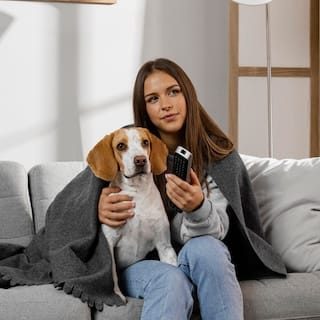Puppy Crate Training 101: A Step-by-Step Guide to Housebreaking Your New Furry Family Member

Crate training is more than just teaching your puppy where to sleep; it's about creating a positive space that they associate with safety and comfort. This approach mirrors the natural instincts of dogs—to seek out small, den-like spaces for rest and relaxation. Thus, a crate becomes their sanctuary, offering solace when the world gets too overwhelming.
Understanding the Essentials of Crate Training
The significance of crate training extends beyond providing a private retreat for your puppy; it's instrumental in establishing routine, facilitating potty training, and minimizing separation anxiety. The key lies in ensuring that your puppy perceives the crate as a rewarding place to be. It should never serve as a punishment or isolation tool. Emphasizing the den-like quality of their crate cultivates an environment where your puppy feels secure and cherished.
Creating an inviting crate environment is pivotal for encouraging your puppy to embrace it willingly. Selecting the right-sized crate is the first step. It should be spacious enough for your puppy to stand, turn around, and stretch out without feeling cramped, yet cozy enough to provide that snug, den-like feel they innately crave.
Creating a Safe and Comfortable Crate Environment
Equipping the crate with soft bedding is essential for your puppy's comfort. A blanket or bed that snuggles them into sleep can transform the crate from mere containment to a warm nest. Incorporating toys adds a layer of mental stimulation, making the crate not just a place for rest but also for quiet play. Personalizing the crate with these items fosters an environment where your puppy feels truly at home.
Introducing your puppy to their crate requires patience and positivity. Begin by allowing them to explore this new space without pressure—leave the door open and sprinkle some treats inside to pique their curiosity. Use encouraging words and gestures to show that the crate is a good place.
To make this introduction smoother, associate every step with positivity. If they choose to enter on their own, shower them with praise. Making these first experiences enjoyable sets a strong foundation for their ongoing crate training journey.
Introducing Your Puppy to the Crate: Tips for Success
Routine plays an indispensable role in successful crate training. A consistent schedule helps your puppy understand what's expected of them, aiding significantly in housebreaking efforts. Incorporate designated times for eating, playing, and going outside for bathroom breaks into your daily routine.
Tailoring this schedule to fit both your lifestyle and your puppy's needs streamlines their acclimation process. Over time, as they grow accustomed to this rhythm, their body clocks align with these activities, fostering a sense of security and predictability.
Establishing a Crate Training Schedule for Success
Incorporating positive reinforcement techniques bolsters your puppy's association of the crate with happy outcomes. Treats, praise, and affection become tokens of encouragement, motivating them to view their crate as a source of good things.
Recognizing and reinforcing calm behavior in the crate amplifies its desirability for your puppy. As part of Tails' Talks' commitment to nurturing well-adjusted pets, we emphasize the incredible impact of positive reinforcement—it's not just about rewarding good behavior; it's about building trust and understanding between you and your furry friend.
Using Positive Reinforcement in Crate Training
Anticipating potential hurdles is crucial for smooth crate training progress. Initial resistance or distress signals like whining are common as they adjust. However, consistency in not immediately succumbing to their pleas teaches them that crying won't lead to release from the crate. Instead, focus on extending their comfortable duration within before gradually increasing it.
It's also essential to ensure that the crate isn't used excessively. Puppies need ample time out of their crates to explore, play, and bond with you. Striking this balance prevents feelings of isolation or negative associations with their crates.
As your puppy demonstrates reliability in maintaining cleanliness within the crate and adheres well to house rules, you can begin extending their freedom around the house under supervision. This transition acknowledges their growing understanding of house manners and further cultivates their independence.
Preventing Common Issues in Puppy Crate Training
During this stage, it’s important to maintain access to their crate, allowing them to retreat whenever they feel the need. Gradual introduction to larger spaces reduces overwhelm while reinforcing that their crate remains a safe space amidst these new liberties.
Despite best efforts, challenges may arise in pint-sized shapes like persistent crying or reluctance toward the crate. In these moments, reassessing your approach becomes necessary—ensuring that all needs are being met outside of training times can illuminate underlying issues causing discomfort or distress.
Related Article: Integrating Virtual Reality into Pet Training Programs
Gradual Freedom: Transitioning from Crate to House Access
Seeking advice from professional trainers or certified behaviorists becomes invaluable when faced with stubborn training obstacles. These experts can offer tailored strategies that cater directly to your puppy's personality quirks or specific resistance issues.
Frequently Asked Questions
Crate training serves multiple purposes, including providing a safe space for your puppy, aiding in potty training, and helping to minimize separation anxiety. It creates a den-like environment that puppies instinctively seek for comfort, ensuring they feel secure and cherished in their crate.
To create a comfortable crate environment, choose the right-sized crate that allows your puppy to stand and turn around easily. Add soft bedding and include toys for mental stimulation. Personalizing the crate with these items makes it a cozy retreat where your puppy feels at home.
Introduce your puppy to the crate by allowing them to explore it freely with the door open. Use treats to encourage them to enter and praise them when they do. Associating positive experiences with the crate helps establish a strong foundation for successful crate training.
Common issues during crate training include whining or resistance from your puppy. It's important not to give in immediately to their cries, as this can reinforce negative behavior. Ensure they have enough time outside the crate for play and bonding to prevent feelings of isolation.
You can transition your puppy from the crate to full house access once they consistently maintain cleanliness and follow house rules. This gradual introduction should be supervised, allowing them to explore while still having access to their crate as a safe retreat when needed.






